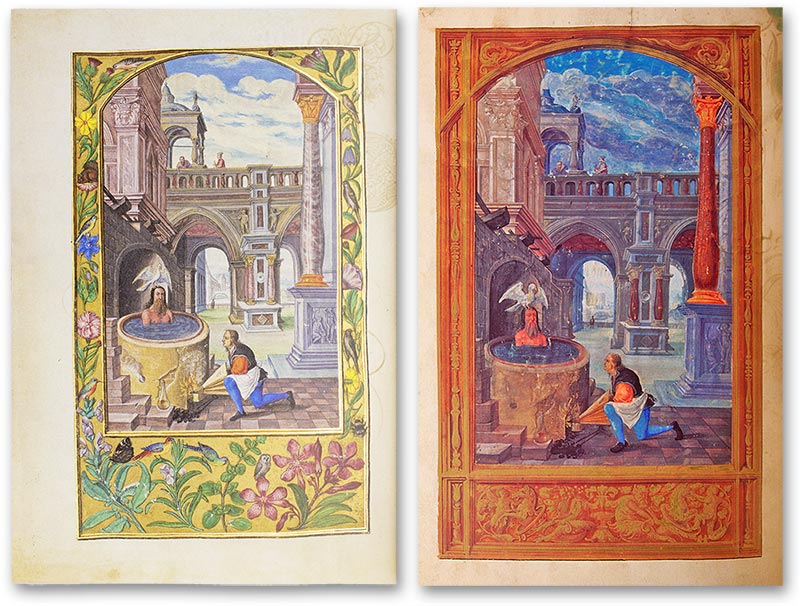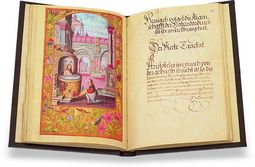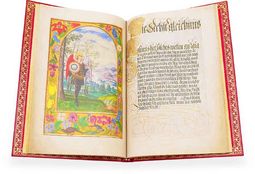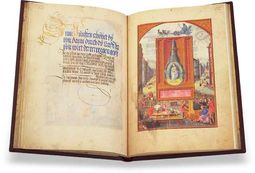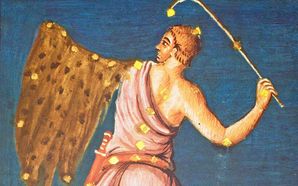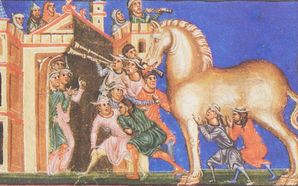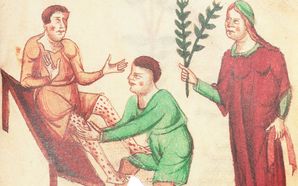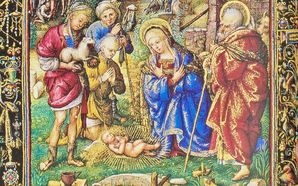Alchemy
Alchemy is one of the most mysterious and fascinating legacies of the Middle Ages. Rooted in ancient China, India, and Greece, alchemy was practiced most prolifically in Europe from the Late Middle Ages through the Early Modern period. Although most prominent during the Renaissance, when the princes of Europe often had court astrologers and alchemists, it continued to be practiced secretly but perhaps even more broadly through the 18th century.
The central pursuit of alchemy was the discovery of the “philosopher’s stone”, a mysterious substance with various attributes ranging from the transmutation of metals and gems to being the critical ingredient in creating an elixir of life. Although discounted today as a pseudoscience, alchemy continues to be a source of fascination today, influencing popular works like the Harry Potter book series.
Demonstration of a Sample Page
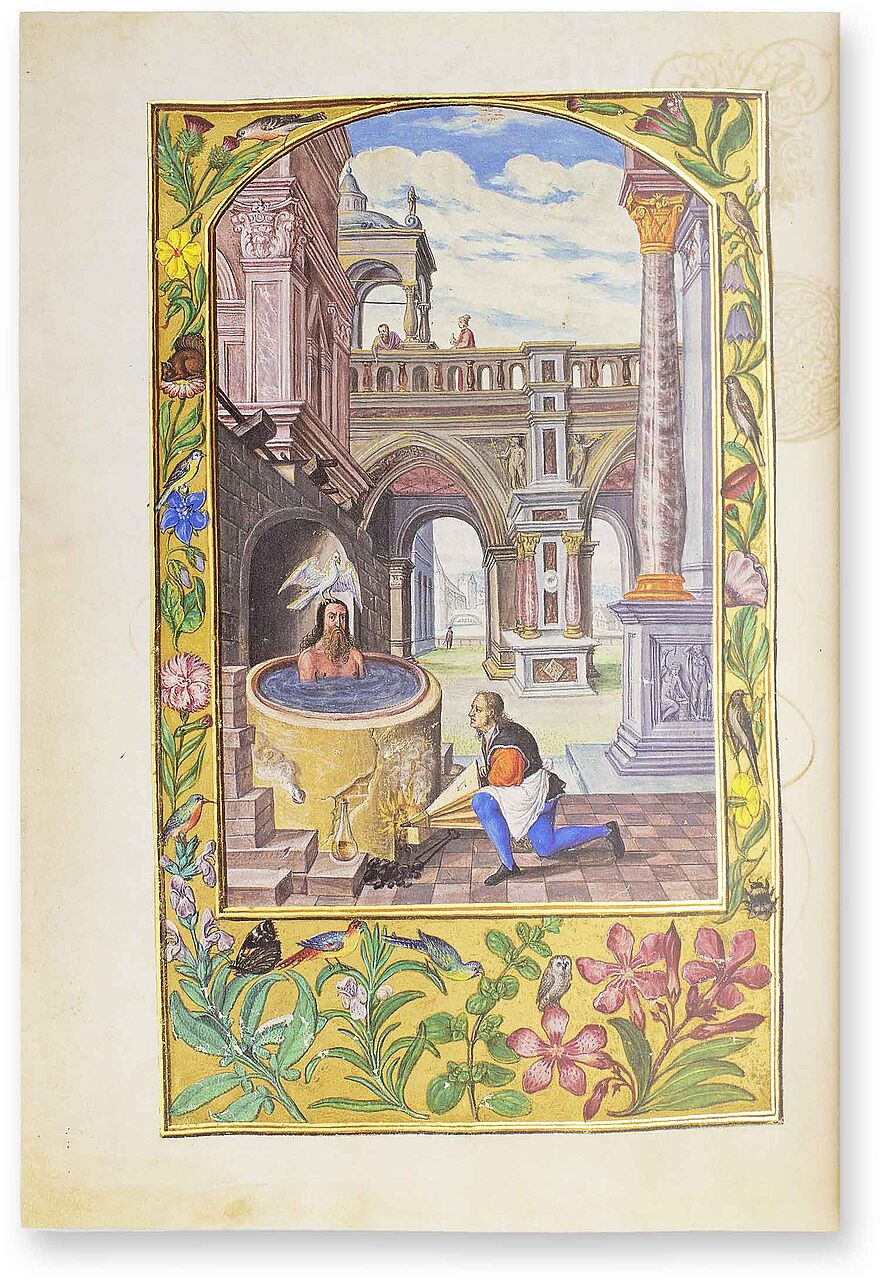
Splendor Solis
A Bathing Alchemist
In alchemy, albedo is the second of four major stages in the process, along with nigredo, citrinitas, and rubedo. It is a stage of purification for both substances and for the purification of one’s soul, which is symbolized by a white dove in medieval literature and art. The ultimate goal of the albedo is to restore the soul to its original state of purity and receptivity.
Like most alchemical manuscripts, this German Renaissance work is filled with allegorical imagery in order to guard alchemy’s secrets from the uninitiated. Before a splendid background of classical architecture, a male attendant fans the flames of a large brick bath. The bearded man sitting in a bath with the white dove on his head symbolizes the cleansing of the soul.
The Secrets of Alchemy
The transformation or “transmutation” of matter, specifically of base metals like lead into noble metals like gold, or the fabrication of precious stones, is the basic principle of alchemy. The term first arose in 12th century Latin Europe but may have origins in Arabic or even ancient Egyptian. It continues to be a fascinating subject today, perhaps because it seems to fly in the face of what we now know about the scientific properties of matter.

The medieval pseudosciences of alchemy and astrology are closely related, and in fact, the former appears to have evolved from the latter, sometimes featuring together in texts. Both are concerned with man’s relationship with the universe: one deals with man’s relationship with the cosmic, the other man’s relationship with the terrestrial. Furthermore, it was believed that by unravelling theses mysteries, one might gain a greater understanding of God’s divine plan. Although alchemy was practiced across Asia, Europeans appear to have been the most fascinated with it and were unique in their focus on the manufacture of gold.
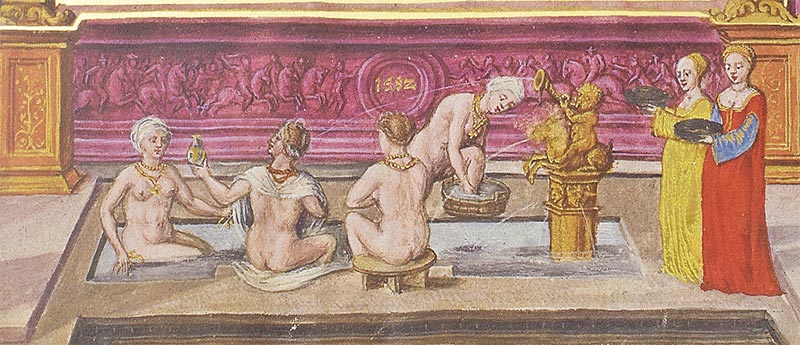
To the facsimile
Mystery is the key word here, as alchemists jealously guarded the secrets of their art, either because they had actual secrets to keep or because it was necessary to maintain the veneer of their chicanery. Relatively few alchemy manuscripts have survived, authored or translated by the likes of Albertus Magnus (ca. 1193-1280) and Roger Bacon (ca. 1219/20-92), and these tend to be extremely enigmatic, intended only for the initiated.
The Pseudoscientific Roots of Modern Science
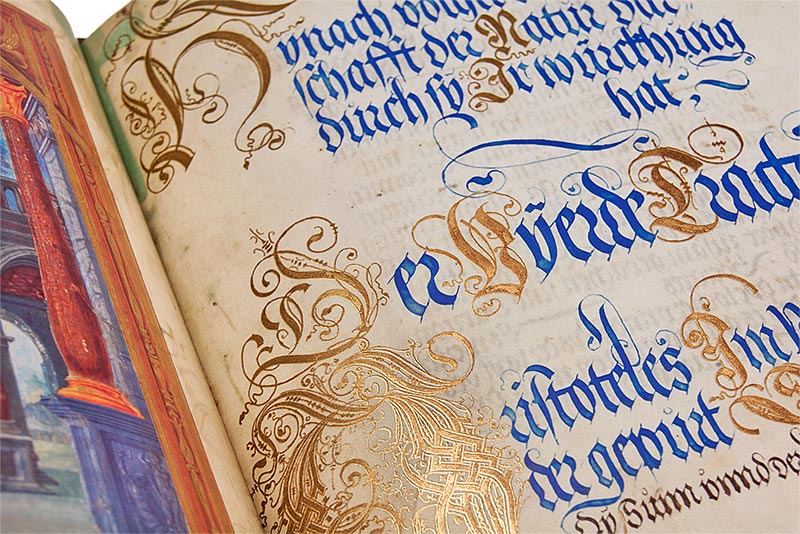
To the facsimile
What we do know about alchemy is that, like the relationship between astrology and astronomy, the pursuit of this pseudoscience actually helped to promote real science. More specifically, attempting to discover the complicated methods by which one could transform lead into gold contributed to the development of the modern scientific method. Furthermore, income from more esoteric practices of questionable validity funded more serious scholarly endeavors.
Medieval Europe had no independent word for chemistry at this time, it was all one science. As such, various mineral acids were discovered by alchemists which are fundamental for modern chemistry including nitric acid, sulfuric acid, and hydrochloric acid. The distillation of aqua vitae, i.e. alcohol, is believed to have developed in a similar matter.
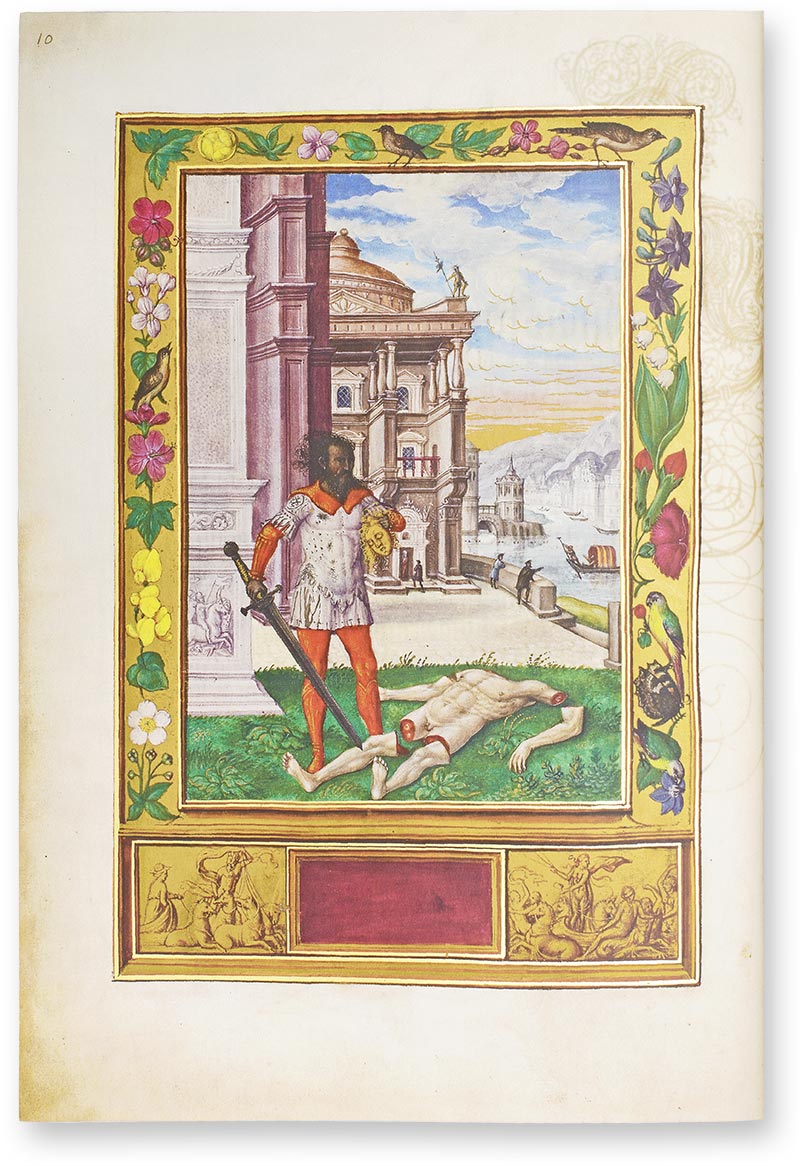
To the facsimile
Alchemists in ancient Greece, China, and India identified the same five basic elements or properties that are in fact primitive versions of our modern concept of energy. Later European alchemists also used these concepts, but placed a much greater emphasis on the production of gold than their counterparts in the Orient.
What was the Philosopher’s Stone?
Alchemy was not conclusively disproven until the 19th century and continued to be popular, albeit as a secretive and esoteric practice, through the 18th century. Great figures of modern science could not resist the allure of alchemy, even Sir Isaac Newton (1643-1727) spent the later years of his life in seclusion trying to discover the secret of the elusive “philosopher’s stone”. Referred to alternatively as “a stone that is not a stone”, “the tincture”, or “the powder”, it was believed to be both the key to transmutation and an elixir of life could be derived from it.
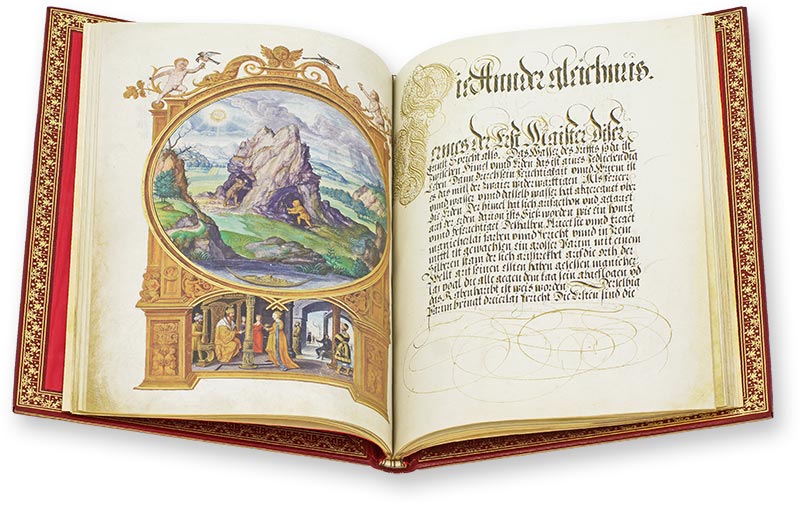
To the facsimile
The central goal of this esoteric art is unsurprisingly one of the most attractive historical mysteries because the philosopher’s stone symbolizes perfection, enlightenment, and heavenly bliss – the very key to life itself. Paracelsus, a prominent 16th century Swiss alchemist, thought that it was an undiscovered element from which all others derived. It has even been theorized that this substance was radium or something similar because radiation, by virtue of changing the atomic structure of a substance, can alter its very nature.
Renaissance Alchemy Manuscripts
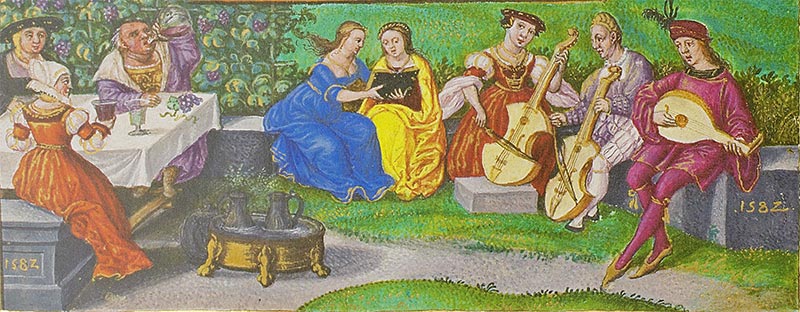
To the facsimile
The discovery of works from antiquity during the Middle Ages also had ramifications for alchemy. Now, a more complete form encompassing all the medical, pharmaceutical, occult, and entrepreneurial aspects of alchemy emerged. While the transmutation of base metals into noble ones remained a goal, the human body, its health, and harmony with nature became the new focus, with the belief that certain chemicals could cure illness. It also assumed certain cabbalistic aspects, with some believing that the philosopher’s stone could be used to summon angels.
Alchemists were employed by nearly all the princes of Renaissance Europe, but the court of Holy Roman Emperor Rudolf II (1552-1612) in Prague was the greatest center. Aside from offering more esoteric counsel, alchemists were employed to consult on a variety of topics ranging from mining and metallurgy to medicine and pharmacology. The most common alchemical manuscript was the Splendor Solis, which is concerned with the alchemical death and rebirth of a king, followed by a series of seven flasks representing the planets.
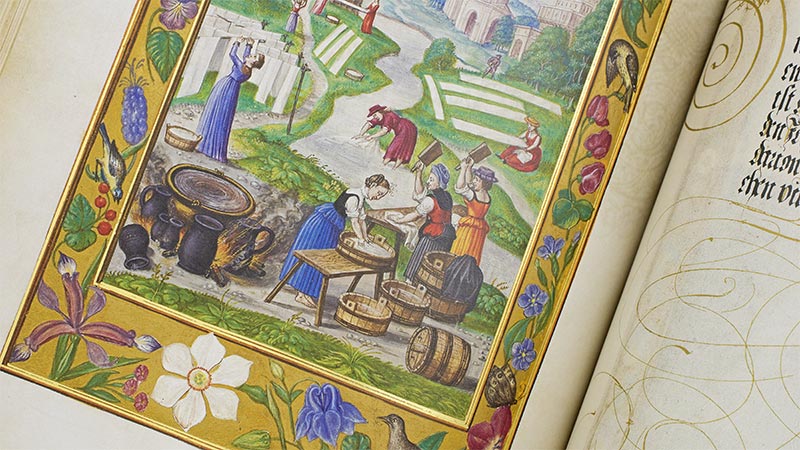
To the facsimile
A German manuscript of the work from ca. 1400 was owned by King Charles II of England (1630-85). Other specimens, also from Germany, include an edition known as Sonnenglanz from 1531/32, which was commissioned by a member of the wealthy and powerful Fugger family of Augsburg, and another from ca. 1572. Both are masterpieces of Renaissance art with miniatures that were at least inspired by Albrecht Dürer (1471-1528), Albrecht Glockendon (ca. 1500-45), Hans Holbein (ca. 1497-1543), and Lucas Cranach (ca. 1472-1553).


